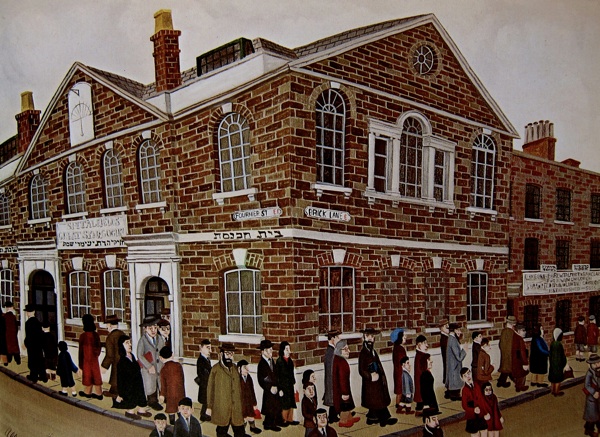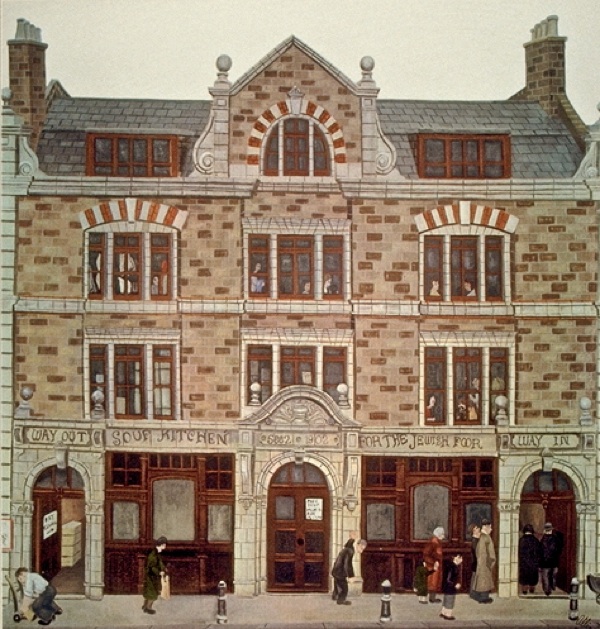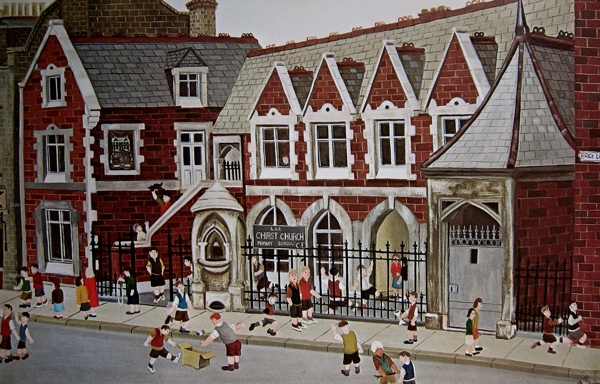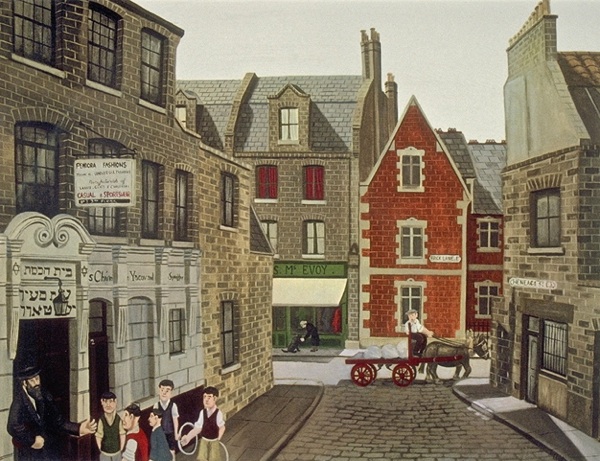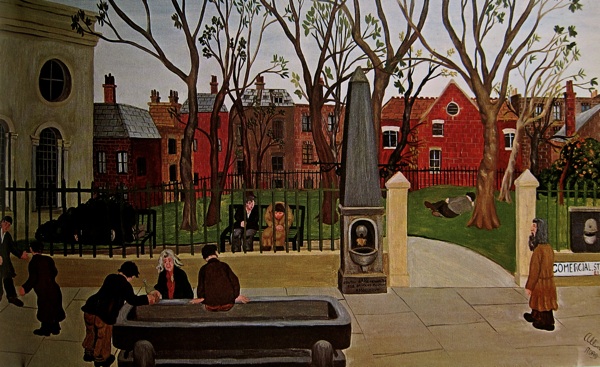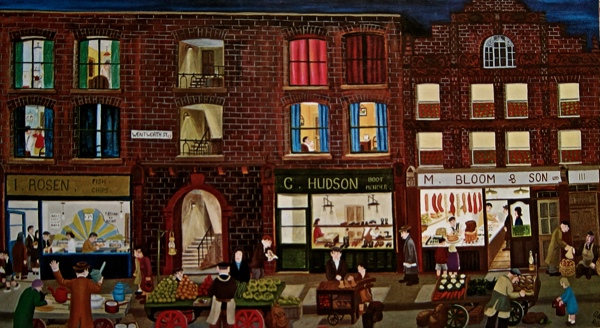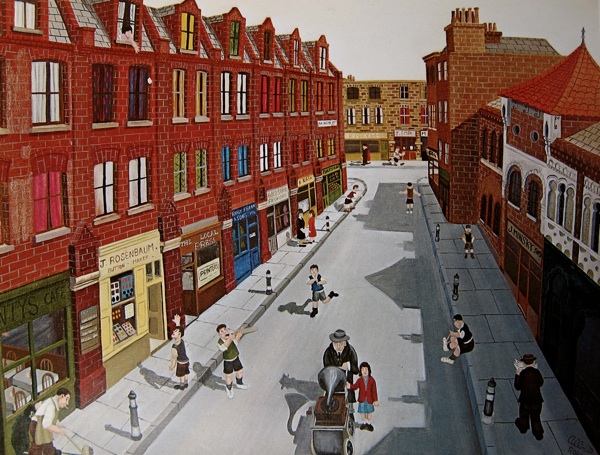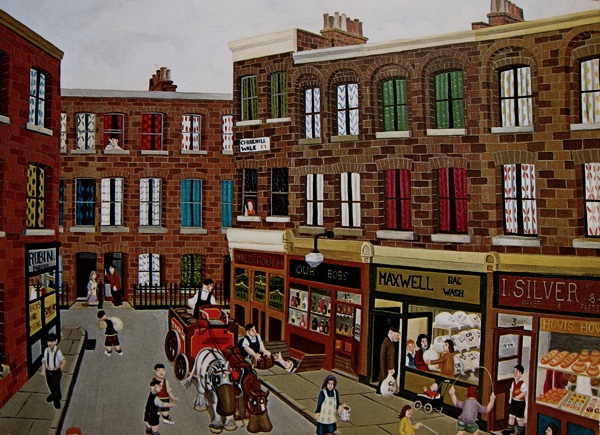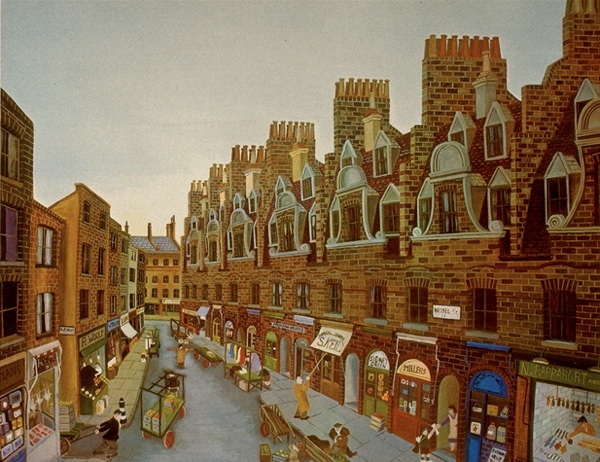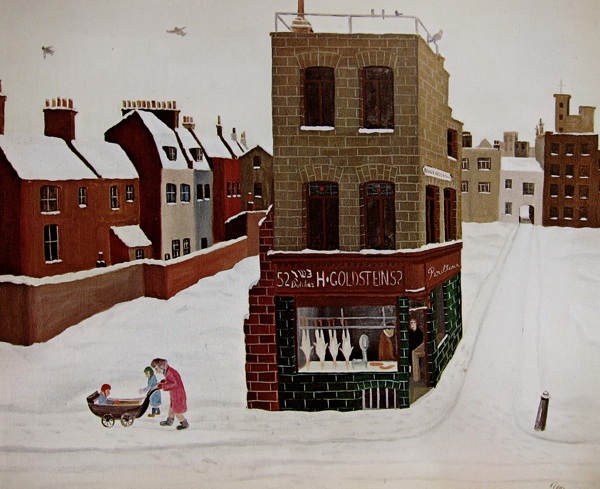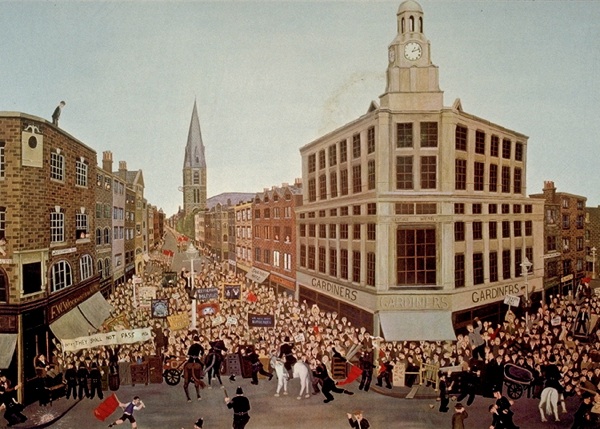Gun St, Spitalfields
John Allin (1934-1991) began painting while serving a six month prison sentence for minor theft, and achieved considerable success in the sixties and seventies with his vivid intricate pictures recalling the East End of his childhood. There is a dreamlike quality to these visions in sharp focus of an emotionalised cityscape, created at a time when the Jewish people were leaving to seek better housing in the suburbs and their culture was fading from those streets which had once been its home.
Returning from National Service in the Merchant Navy, Allin worked in the parks department planting trees, later as a swimming pool attendant and then as a long distance lorry driver – all before his conviction and imprisonment. After discovering his artistic talent, he devoted himself to painting and won attention with his first exhibition in 1969 at the Portal Gallery, specialising in primitive and outsider art. In 1974, he collaborated with Arnold Wesker on a book of reminiscence, “Say Goodbye: You may never see them again” in which he reveals an equivocation about the East End. “I saw it as a place where people lived, earned their living, grew up, moved on … they had dignity … I like painting the past with dignity…” he said in an interview with Wesker, “but what they’ve done to the East End is diabolical! They’ve scuppered it, built and built and torn down and torn out and took lots of identity away and made it into just a concrete nothing… But people go on, don’t they? Eating their eels and giving their custom where they’ve always given their custom … Funny how people can go on and take anything and everything.”
Like Joe Orton in the theatre, Allin’s reputation as an ex-con fuelled his reputation in newspapers and on television but he found there was a price to pay, as he revealed to Wesker, “You know how I started painting don’t you? In prison! Well, when I come out the kids at school give my kid a rough time … the silly bloody journalists didn’t help. ‘Jail-bird becomes painter!’ You’d've thought I’d done God knows what … I mean the neighbours used to say things like ‘Look at ‘im! Jail-bird and he’s on telly! Ought to be sent back inside the nick!’ I was the oddity in the district, the lazy fat bastard that paints. Give me a half a chance and I’d move mate.” In fact, Allin joined Gerry Cottle’s Circus, touring as a handyman to create another book, “John Allin’s Circus Life” in 1982.
Although he was the first British recipient of the international Prix Suisse de Peinture Naive award in 1979, the categorisation of Outsider or Primitive artist is no longer adequate to apply to John Allin. More than twenty years after his death, his charismatic paintings deserve to be recognised as sophisticated works which communicate an entire social world through an unapologetically personal and emotionally charged visual vocabulary.
[There is a video that cannot be displayed in this feed. Visit the blog entry to see the video.]
John Allin & George Innes in Spitalfields, 1976
Spitalfields Market, Brushfield St.
Great Synagogue, Brick Lane.
Jewish Soup Kitchen, Brune St.
Christ Church School, Brick Lane.
Heneage St and Brick Lane.
Rothschild Dwellings, Spitalfields.
Whitechapel Rd.
Christ Church Park, Commmercial St.
Wentworth St.
Fashion St with gramophone man in the foreground..
Churchill Walk.
Young Communist League rally, corner of Brick Lane and Old Montague St.
Hessel St.
Snow Scene.
Anti-Fascist Rally at Gardiners’ Corner, 1936.
Cole’s Chicken Shop, Cobb St.
Factory Workers
You may also like to look at


